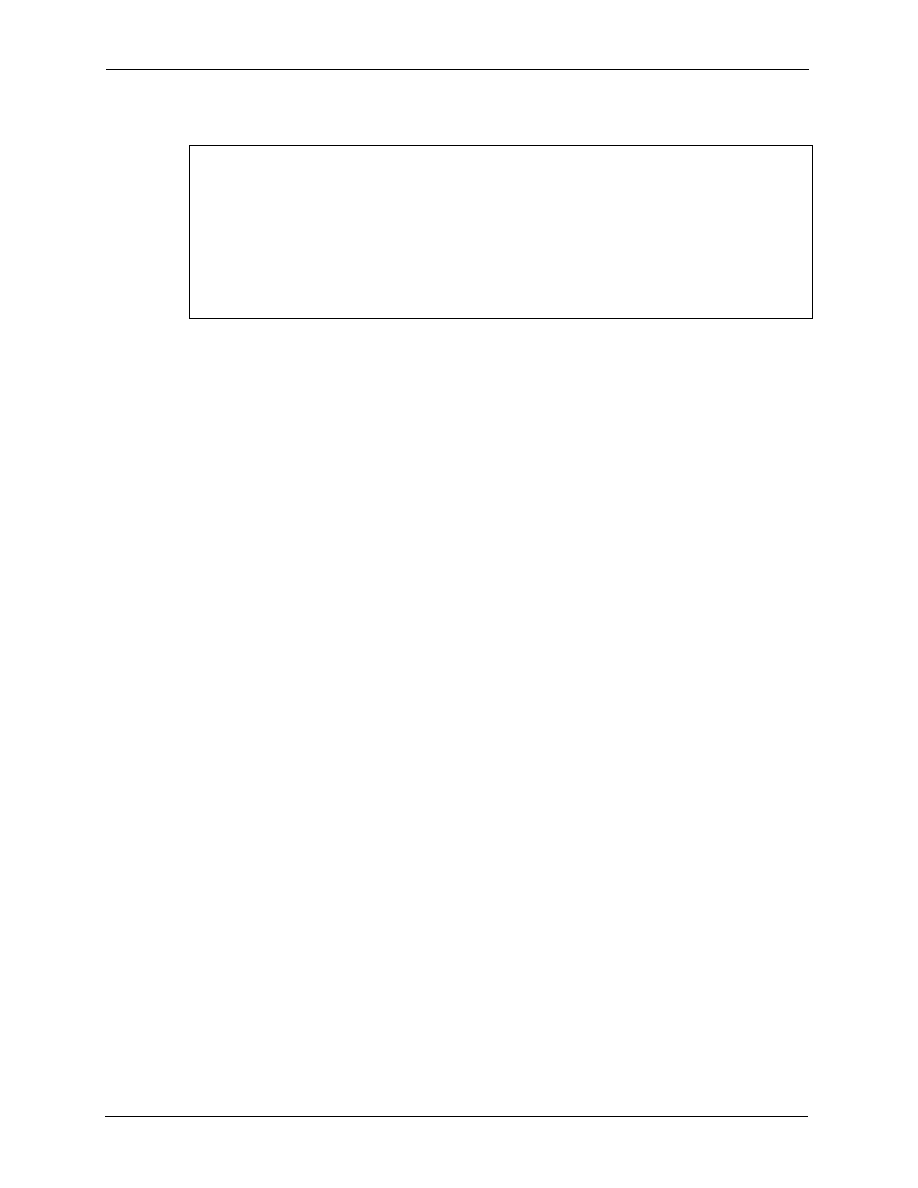
Prestige 334 User’s Guide
267
Chapter 27 Filter Configuration
Figure 143
Example Filter Rules Summary: Menu 21.1.3
This shows you that you have configured and activated (
A = Y
) a TCP/IP filter rule (
Type =
IP
,
Pr = 6
) for destination telnet ports (
DP = 23
).
M = N
means an action can be taken immediately. The action is to drop the packet (
m = D
) if
the action is matched and to forward the packet immediately (
n = F
) if the action is not
matched no matter whether there are more rules to be checked (there aren’t in this example).
After you’ve created the filter set, you must apply it.
1
Enter 11 from the main menu to go to menu 11.
2
Go to the
Edit Filter Sets
field, press
[SPACE BAR]
to select
Yes
and press
[ENTER]
.
3
This brings you to menu 11.5. Apply a filter set (our example filter set 3).
4
Press
[ENTER
] to confirm after you enter the set numbers and to leave menu 11.5.
27.4 Filter Types and NAT
There are two classes of filter rules,
Generic Filter
(Device) rules and protocol filter (
TCP/
IP
) rules. Generic filter rules act on the raw data from/to LAN and WAN. Protocol filter
rules
act on the IP packets. Generic and TCP/IP filter rules are discussed in more detail in the next
section. When NAT (Network Address Translation) is enabled, the inside IP address and port
number are replaced on a connection-by-connection basis, which makes it impossible to know
the exact address and port on the wire. Therefore, the Prestige applies the protocol filters to the
“native” IP address and port number before NAT for outgoing packets and after NAT for
incoming packets. On the other hand, the generic, or device filters are applied to the raw
packets that appear on the wire. They are applied at the point when the Prestige is receiving
and sending the packets; i.e. the interface. The interface can be an Ethernet port or any other
hardware port. The following diagram illustrates this.
Menu 21.1.3 - Filter Rules Summary
# A Type Filter Rules M m n
- - ---- --------------------------------------------------------- - - -
1 Y IP Pr=6, SA=0.0.0.0, DA=0.0.0.0, DP=23 N D F
2 N
3 N
4 N
5 N
6 N
Enter Filter Rule Number (1-6) to Configure:




















































































































































































































































































































































































